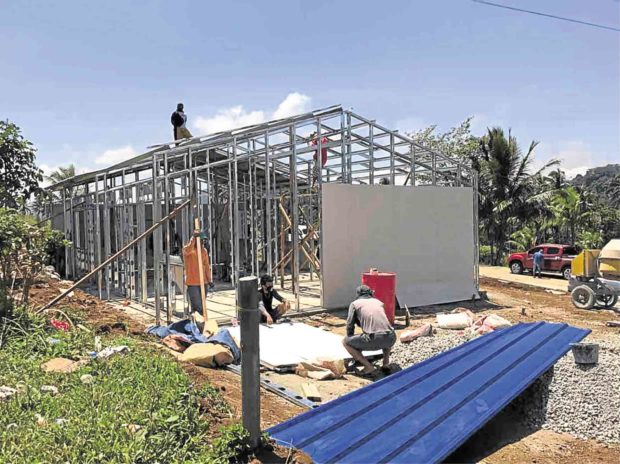
It’s still a long way to go for Marawi City residents to recover from last year’s five-month reign of terror, but small steps have started as early July 2017 in Sagonsongan, one of the housing sites for the displaced families. —PHOTO FROM TASK FORCE BANGON MARAWI
Damage and losses from the five-month siege of Marawi City stood at more than P18 billion, officials said on Friday, but the government will need at least P50 billion to put the city back on its feet.
The rehabilitation cost, however, could still rise once the ongoing assessment is completed, according to Eduardo del Rosario, chair of Task Force Bangon Marawi.
Del Rosario said many residents are still barred from returning to their homes because soldiers are still looking for 13 unexploded rounds of 600-pound bombs dropped by Air Force jets.
It takes time to find and defuse these unexploded munition and the military expects to complete the clearing operation in the first week of April, he added.
Those who will insist on returning to their homes would have to sign a waiver clearing the national and local government of any responsibility if they get hurt by unexploded bombs, he said.
Once the clearing operations are completed as scheduled, Del Rosario hopes rehabilitation work can begin by April 15.
The cost of the rehabilitation can amount to almost a tenth of the national government’s entire public works budget for 2018, according to data released by Malacañang.
Assistant Communications Secretary Marie Banaag said lost economic opportunities alone were already estimated at P6.6 billion while actual damage was already at P11.61 billion and still counting.
With most of the city destroyed, bringing Marawi back on its feet is estimated to cost at least P49.81 billion, said Banaag.
The final amount can still increase depending on the final assessment of the National Economic and Development Authority (Neda), which is expected to release its comprehensive rehabilitation and reconstruction plan (CRRP) in the second week of March, Del Rosario said.
Five big developers are expected to join the Swiss challenge procurement and submit proposals to the government by Jan. 15, Del Rosario said. He declined to name the developers, saying it would be premature, but they include consortiums of local and foreign firms.
The government would then select a proposal from among the five and, once a proponent is selected, the terms of reference and scope of work will be published.
Within 30 days after the publication, another developer can challenge the original proponent by submitting a proposal with a lower cost. The original proponent can also offer a counter-challenge, he said.
“We will be imposing a five-percent reduction so that he can outbid the lowest. In this way, we will get the best offer that the government can possibly get,” he said.
Del Rosario said only one developer will be in charge of the entire program to ensure harmony and compatibility among its components.
He said the government wants to avoid problems similar to that of the Metro Rail Transit where the government purchased coaches that were incompatible with the existing railway.